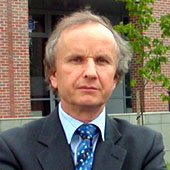The Uncertain Future: The World in 2111 (Part I)
What transformations will the world undergo over the next century?
March 3, 2011
A hundred years from now, the political map of the world will look pretty much the way it looks today. The things that had to change have, for the most part, already changed. There won’t be any caliphate, the unitary Islamic state. That’s another pipe dream.
Some countries will break up — Iraq soonest of all, followed by a few in Africa and South Asia. Others may shift their borders, mostly in Africa as a way of correcting the political legacy of colonialism and adjusting in a more sensible way to the dispersion of ethnic groups, rather than continuing to follow the old imperialist straight lines that carved up the land like pieces of a cake. Most of these corrections will be handled through negotiation and territorial compensation.
Few states will merge into new entities. It might happen in some parts of the Middle East, where the success story of the United Arab Emirates is a model, and perhaps among some of the African countries that feel themselves strongly bound together in cultural terms.
There will be new federations, and the regional integration groups will be far stronger than at present, especially the Asian economic community and the South American alternative to North America’s NAFTA.
Australia and New Zealand, looking back nostalgically on the times when they were, first, the remote antipodes and, later, pro-Western allies of the United States, will be drawn into the orbit of Asia, and more specifically of China and Japan. Those two countries will continue their peaceful rivalry. The United States will still be a superpower, trying to keep up as China and Europe pull away.
Human migration will continue on a larger scale. Many Asians from the south and east of the continent will settle in the territories of the Russian Far East, in the Primorsky Krai (which, surprisingly, had several times the present population density 2,000 years ago) and above all Siberia, where life will become increasingly tolerable.
Far from causing wars, migration, such as the great migration from Africa and the Middle East to Europe, will be a key way of avoiding them. Europeans will also be on the move, and in every conceivable direction.
Light versus darkness
It will be brighter, especially at night. Almost everywhere, electrification will be more intense than it is today in heavily populated areas. Evenings will last longer in places where they now end when the sun goes down.
One of the things that strikes you most when you travel around today is the intensity of the electric lighting in North America, and its absence in Africa. When your airplane is approaching Los Angeles International Airport, everything is lit up. The urban agglomeration beneath you uses up several times as much electricity as the populous country of Ethiopia, where the descent to Bole airport takes place in nearly total darkness.
There will be fewer and fewer places where you can admire total darkness even for a brief moment. The vast majority of people living in affluent countries have never experienced it, and they never will unless they happen to find themselves in the vastness of the Sahara, the Australian Outback, the Mongolian steppes, the Siberian tundra or the middle of the Pacific, the places where there is not a single light bulb or a single campfire for 100 or more kilometers around, and where all the notebooks and satellite phones are turned off.
Evolution of language
There will be fewer languages but more words. The interpenetration of cultures, and above all the progress in science and technology, will enrich language. In the Renaissance it was mainly literature — poetry and drama — that gave birth to new words. (Shakespeare is credited with introducing more than 2,000 new words to English.)
Now, this is the role of science. Thousands of words will come into use that can be found in no dictionary today. In economics, most of them will have to do with finance and management. These words do not exist yet because the phenomena and processes they will describe do not exist yet, or are not known.
The basic data and analyses will still be categorized by country, but more and more of them will refer to new profiles that cut across the traditional national breakdown. New measures of economic progress and social prosperity will emphasize nonmaterial values and the increasing worth of the natural environment.
Editor’s Note: This feature is excerpted from TRUTH, ERRORS, AND LIES: POLITICS AND ECONOMICS IN A VOLATILE WORLD by Grzegorz W. Kolodko. Copyright 2011 Columbia University Press. Used by arrangement with the publisher. All rights reserved.
Read Part II here.
Takeaways
There will be fewer and fewer places where you can admire total darkness even for a brief moment.
A hundred years from now, the political map of the world will look pretty much the way it looks today. The things that had to change have, for the most part, already changed.
The interpenetration of cultures, and above all the progress in science and technology, will enrich language.
